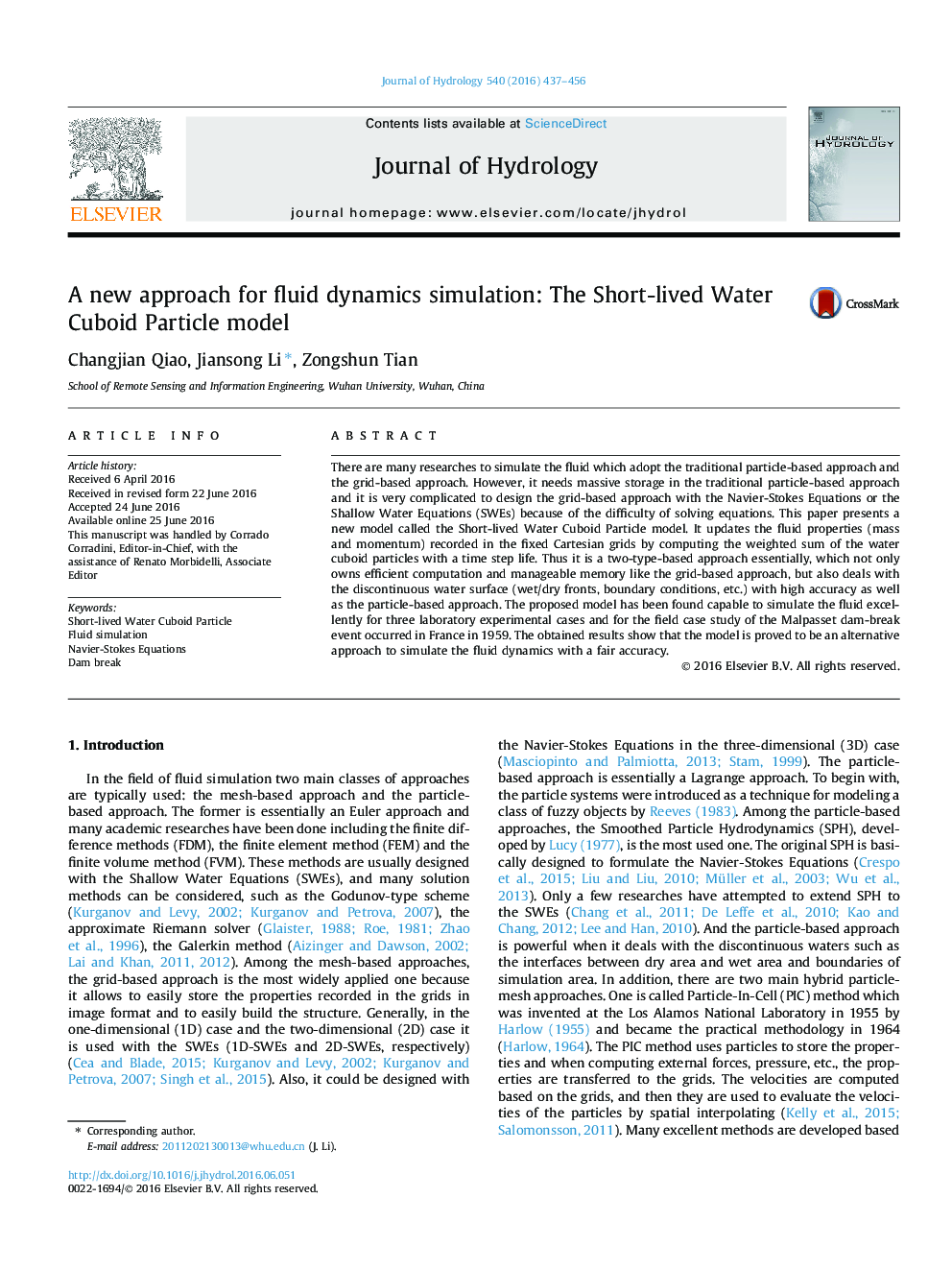| Article ID | Journal | Published Year | Pages | File Type |
|---|---|---|---|---|
| 6409546 | Journal of Hydrology | 2016 | 20 Pages |
Abstract
There are many researches to simulate the fluid which adopt the traditional particle-based approach and the grid-based approach. However, it needs massive storage in the traditional particle-based approach and it is very complicated to design the grid-based approach with the Navier-Stokes Equations or the Shallow Water Equations (SWEs) because of the difficulty of solving equations. This paper presents a new model called the Short-lived Water Cuboid Particle model. It updates the fluid properties (mass and momentum) recorded in the fixed Cartesian grids by computing the weighted sum of the water cuboid particles with a time step life. Thus it is a two-type-based approach essentially, which not only owns efficient computation and manageable memory like the grid-based approach, but also deals with the discontinuous water surface (wet/dry fronts, boundary conditions, etc.) with high accuracy as well as the particle-based approach. The proposed model has been found capable to simulate the fluid excellently for three laboratory experimental cases and for the field case study of the Malpasset dam-break event occurred in France in 1959. The obtained results show that the model is proved to be an alternative approach to simulate the fluid dynamics with a fair accuracy.
Related Topics
Physical Sciences and Engineering
Earth and Planetary Sciences
Earth-Surface Processes
Authors
Changjian Qiao, Jiansong Li, Zongshun Tian,
